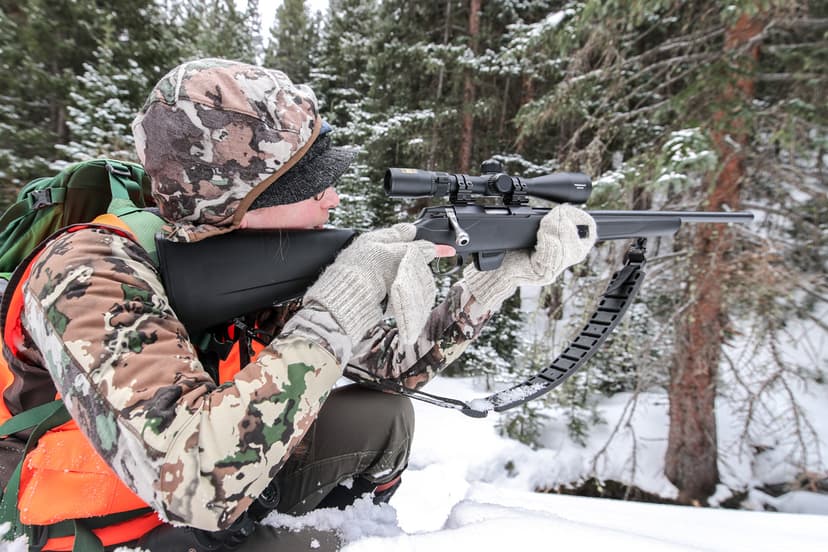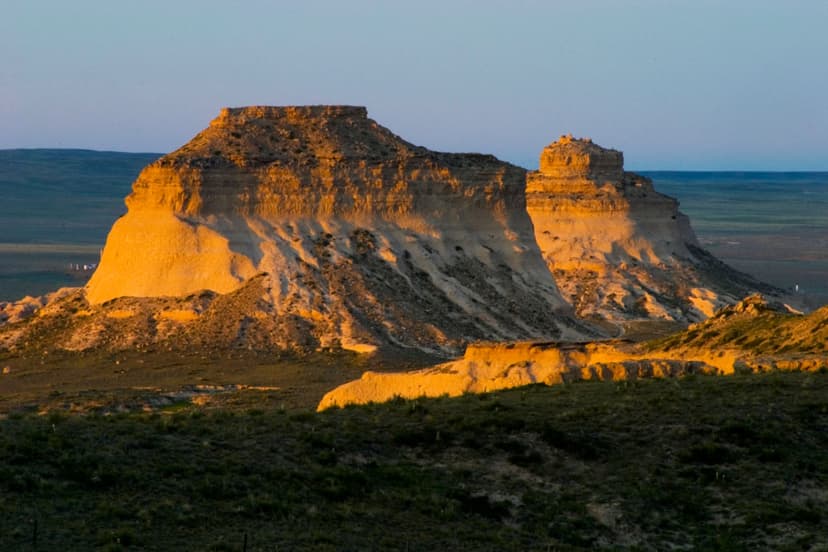Colorado is home to more than 450 different avian species, many of which are found in the diverse ecosystems just east of the Rocky Mountains. Here, lone falcons share the sky with droves of tiny white-throated swifts, owls snooze inside hollowed trees and prairie chickens strut through vast stretches of golden shortgrass.
With such wide-ranging terrain and varied wildlife, the area is a renowned destination for avid birders. The Colorado Birding Trail is a large-scale initiative that identifies prime birding areas in Colorado, both public and private, where visitors can see the state's beautiful birds. Grab your binoculars and follow the call of the wild with this sampling of birding trails.
Snow Goose Trail, South of Burlington
Water and shorebirds flock to the reservoirs, ponds and lakes near Burlington yearly along the Snow Goose Trail. During migration, you’ll see mountain plovers, sandpipers, sandhill cranes and egrets. Winter residents include snow and Ross’s geese and other waterfowl. Keep an eye out for ring-necked pheasants, bald eagles and barn swallows, plus burrowing and great horned owls.
Spanish Peaks Trail, South of Pueblo
Along the Highway of Legends scenic byway and circling the Spanish Peaks, the Spanish Peaks Trail near Pueblo winds through just about every habitat Colorado has to offer. You’ll find everything from waterbirds to marsh-dwellers to dryland and high-elevation species. Loons, swans, gray jays, three-toed woodpeckers, pygmy nuthatches, hepatic tanagers and ptarmigan are just a few of the birds that call this diverse area home.
Comanche Trail, Las Animas/Baca Counties
Lesser prairie chickens — a threatened species — are found throughout the Comanche Trail's peaceful plains. The Campo Lek site is the only publicly accessible lesser prairie chicken lek (or dancing ground) in the state. Other avian inhabitants include Mississippi kites, red-bellied woodpeckers, Cassin’s sparrows, roadrunners, mountain plovers, rock wrens and a variety of hawks.
Greater Prairie Chicken Trail, East of Fort Morgan
Head to this collection of birding sites near Fort Morgan to witness the greater prairie chicken’s peculiar mating dance. The Greater Prairie Chicken Trail is chock-full of leks (dancing grounds), which offer your best shot at seeing the dynamic springtime ritual. Yucca, cottonwood stands, river bluffs and willows provide shelter for other birds as well, including wild turkeys, meadowlarks, sapsuckers, collared-doves and grackles.
Kingbird Trail, Between Denver & Colorado Springs
Primarily high-plains grassland nestled between Denver and Colorado Springs, the Fort Morgan is habitat to diverse species such as golden eagles, mountain plovers, belted kingfishers, Cassin’s kingbirds, yellow-headed blackbirds and lazuli buntings. Keep an eye out for the jays and bluebirds that nest among stands of Ponderosa pine.
Pikes Peak Trail, Colorado Springs Area
The Colorado Springs area offers an enormous variety of native and migratory birds along the Pikes Peak Trail. Varied habitats such as juniper scrub, pinyon forests and alpine tundra shelter myriad species including grouse, ptarmigan, rock wrens, green-tailed and spotted towhee, flammulated and pygmy owls, prairie falcons, woodpeckers, hummingbirds, rosy finches and scaled quail.
Pronghorn Trail, East of Pueblo
Isolated ponds and lakes on the Pronghorn Trail make the perfect habitat for waterbirds such as night herons and pelicans as well as shorebirds such as sandpipers, willit and black-necked stilt. A variety of sparrows, woodpeckers and western screech owls are found in the riparian areas of the Arkansas River, while the yucca and cholla cactus of the semi-desert shrublands farther south are home to curve-billed thrasher, scaled quail and the greater roadrunner. Other watchable wildlife: horned lizards, jackrabbits, red foxes and coyotes.
Two Buttes Trail, East of La Junta
Two Buttes Trail — known for its migratory bird population — near La Junta is regarded as one of the best birding areas in the state. Encompassing the John Martin and Indian reservoirs, as well as the Two Buttes State Wildlife Area, the trail is home to Inca doves, green herons, belted kingfishers, blue grosbeaks, northern bobwhites and several raptors including bald and golden eagles and ferruginous hawks.
Prairie Canyons Trail, South of La Junta
The arroyos, canyons, rimrock, juniper and pinyon of the Prairie Canyons Trail create the ideal setting for dryland species such as the vermillion flycatcher, greater roadrunner, eastern phoebe and ladder-backed woodpecker. Cliff-dwelling raptors like the American kestrel, prairie falcon and great horned owl also inhabit the area.
Southwest Birding Trail Loop
In 2009, the southwest corner of Colorado was added to the state’s birding system, including 13 trails and more than 200 sites. The area’s varied landscapes — desert cliffs, red-rock mesas, mountain meadows, forests, wetlands and alpine tundra — are habitats to a tremendous variety of birds.
Explore the Colorado Birding Trail site to learn more about these new locations and where to find black swifts, gray vireos, pinyon jays, warblers, boreal owls, least flycatchers, black phoebes, pine grosbeaks, yellow-billed cuckoos, sandhill cranes, chukars, Gunnison sage-grouse and so many more. The site also provides driving routes, maps and more.
Bobcat Ridge Natural Area, Loveland
A grassy valley, red-rock cliffs and ponderosa pines populate this birdwatching wonderland in Loveland. The rare American Woodcock, who usually dwell on the East Coast, have event been spotted at Bobcat Ridge. Other winged beauties to look for include golden eagles, grasshopper sparrows, black-chinned hummingbirds and wild turkeys. More than 352 species of birds have been recorded in the Fort Collins area; download the checklist to keep track of the ones you encounter.
Spotting Bald Eagles in Colorado
Birders hoping to catch a glimpse of America’s national symbol flock to the San Luis Valley in the south-central portion of the state. Attracted by abundant waterfowl on the Alamosa and Monte Vista national wildlife refuges during the winter months, these remarkable creatures are found nesting in the tops of cottonwood trees and fishing in ponds, wetlands and the Rio Grande River. The eagles also roost here, although less commonly, in the spring and fall. Regardless of the season, would-be eagle watchers should bring binoculars, since birds are wary of humans and keep their distance.
Want More?
Learn the basics of Colorado birding
Check out some really cool birds you can spot in Colorado






